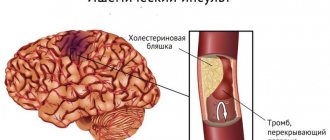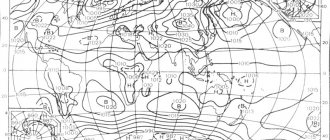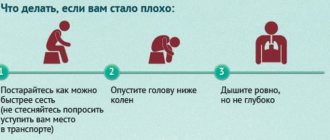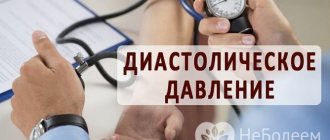What does pressure 140 over 90 mean and what does it mean?
When systolic blood pressure reaches 140 and diastolic blood pressure reaches 90 mmHg. and remain at this level for a long time, doctors talk about the presence of borderline arterial hypertension. But this only applies to young people, for whom the norm is a pressure of 120 to 80 mm Hg, or hypotensive people, whose normal pressure rarely goes beyond 100/60 mm Hg. For an 18-year-old teenager the numbers are 140 by 90 mm Hg. are the upper limit of normal and decrease slightly after puberty.
Under the pressure of blood, the vascular walls thicken, their elasticity decreases and the vessels stop passing blood at an optimal speed, which leads to oxygen starvation of all organs and systems. It is necessary to reduce the pressure, since the longer the condition lasts, the more serious its consequences will be.
For older men and women (50 years and older), due to age-related changes in the state of the cardiovascular system, this upper pressure is normal and does not require correction. The lower one only slightly (5-10 mmHg) exceeds the optimal values. You just need to regularly monitor your condition and listen to your own well-being, avoiding a further increase in pressure, since the consequences of inattention to your own well-being can be the most tragic.
A stable pressure of 140 over 90 or 145 over 95 mm Hg, accompanied by characteristic symptoms of hypertension, is dangerous and can lead to:
- hypertensive crisis, often ending in heart attack or stroke;
- impairment of kidney function;
- heart rhythm disturbances;
- ischemia;
- chronic heart disorders;
- decreased visual acuity.
Complications can be avoided by timely correction of the condition and mandatory intake of antihypertensive drugs prescribed by the doctor. Complex treatment also includes physiotherapeutic techniques and traditional medicine recipes. It is necessary to adjust your diet, give up bad habits, and make physical activity regular.
To regularly monitor your blood pressure, you should purchase a convenient automatic tonometer, which does not require medical skills to operate.
WHEN does a child need to have their blood pressure measured?
In accordance with the order of the Ministry of Health of the Russian Federation dated July 3, 2000 No. 241, blood pressure should be measured at the age of 3 years (before entering a nursery school, kindergarten), 1 year before school (at 5-6 years), immediately before school (6 -7 years), after finishing 1st grade (7-8 years), at the ages of 10, 12, 14-15, 16 and 17 years.
- In children under 1 year of age, this pathology is most often associated with concomitant diseases - pathology of the kidneys, endocrine system, as well as congenital heart disease (coarctation of the aorta).
- From one to 6 years of age, pathologies of the kidneys and endocrine system are also the leading causes. Such children are observed by specialists and should be additionally examined by a cardiologist.
- From the age of 7, cases of so-called essential hypertension (primary, for unknown reasons) are detected.
- During puberty, this type of hypertension becomes the leading one.
"Provocateurs" of hypertension
The reasons for the development of hypertension can be different. This:
Blood pressure 128 over 60 - what does this mean?
- heredity (the risk of experiencing high blood pressure increases in people whose immediate relatives suffer from arterial hypertension, atherosclerosis, or have had a heart attack or stroke);
- obesity (obese people are three times more likely to suffer from hypertension and other heart and vascular diseases);
- smoking (a bad habit makes blood vessels fragile and unable to pass blood in the required volume);
- alcohol abuse (strong alcoholic drinks sharply dilate blood vessels, but after a few minutes they narrow them, which can lead to a jump in blood pressure);
- stress;
- physical inactivity or excessive physical activity;
- poor nutrition;
- taking certain medications;
- pathological processes in the body (endocrine, renal, cardiac).
The risk group includes men aged 40-50 years and women during menopause. High blood pressure is often diagnosed in pregnant women, whose cardiovascular system begins to experience excessive stress and hormonal levels change.
What pressure allows you to diagnose hypertension in an adult?
Important! Why high blood pressure appeared in each specific case can only be said after a comprehensive examination. It is important not only to bring blood pressure levels closer to normal, but also to try to eliminate the cause of the development of the pathology.
WHAT TO DO IF A CHILD HAS HIGH BP?
If this was discovered during an examination by a doctor, then keep in mind that children have so-called “white coat” hypertension due to the child’s emotional lability. If this turns out to be not an isolated case, then you should definitely keep a diary where you can record the child’s blood pressure readings. Moreover, it is necessary to measure at the same time. It is also additionally necessary to conduct examinations to assess damage to other organs (the so-called target organs): clinical blood test, clinical urine test, biochemical blood test with assessment of the lipid spectrum, electrolytes, glucose and renal markers, ECG, echocardiography, fundus examination , Ultrasound of the kidneys with assessment of blood vessels, 24-hour blood pressure monitoring.
Based on the results of the examination, treatment is prescribed with recommendations for control and lifestyle. In short, if a child has high blood pressure, it is recommended that he:
- first of all, normalization of lifestyle,
- healthy 8-10 hour sleep, regular physical activity in the form of walking, running, swimming, skating, skiing, cycling 30-60 minutes a day, limiting weight lifting (static loads),
- limiting work on gadgets to 30-40 minutes a day,
- proper nutrition (limiting table salt, reducing light carbohydrates),
- normalization of weight in case of excess.
If a hypertensive crisis occurs with a worsening condition, call an ambulance; it is not recommended to take medications on your own if they have not previously been selected by a doctor; incorrect dosage selection can worsen the condition!
Alarming symptoms
If a person has a constant pressure of 140 to 90 or 143 to 93 mm Hg. feels well and there are no other abnormalities in his health, which means that this blood pressure is normal for him. However, if the following signs of hypertension appear, you should not hesitate and seek help from specialists:
- headache (unpleasant sensations worsen in the morning or after physical activity);
- there is a constant feeling of fatigue, lethargy, irritability;
- sweating increases;
- there is noise in the ears, “spots” in front of the eyes;
- vision deteriorates;
- pain appears in the chest area;
- the face swells;
- the head and neck turns red;
- climbing a few steps ends in shortness of breath.
Important! It is also necessary to pay attention to heart rate indicators, the norm of which also depends on age. If the heartbeat quickens (pulse 90 and above) or bradycardia appears (pulse 60 and below) in a young person - at 30 years old, this may indicate serious disorders. At the same time, a pulse of 100 in a first-grader is not elevated - this is an optimal indicator that does not require correction.
WHAT IS THE DANGEROUS OF HIGH BLOOD PRESSURE IN A CHILD?
Every third child with this disease may develop hypertension in the future. High blood pressure affects both the general condition of the child - fatigue, retarded mental and physical development - and various organs, such as the eyes, kidneys, and heart.
But, I would like to emphasize that in children prevention and treatment are more effective than in adults and a complete cure is possible!
Pediatrician and pediatric cardiologist Ekaterina Aleksandrovna Yakunina.
High blood pressure treatment
If the pressure has increased one-time, for example, after a severe nervous shock, you can cope with the problem by simply calming down and taking a dose of a sedative. It will not be possible to permanently lower blood pressure, which often rises to critical levels, by taking a few tablets. Complex treatment is required, including:
- taking long-acting antihypertensive medications;
- treatment of concomitant diseases and disorders in the functioning of organs and systems;
- Reasonable physical activity appropriate to age and level of training.
In addition to diuretics, alpha and beta blockers, ATP inhibitors, calcium antagonists, the patient is prescribed physiotherapy that can enhance the effectiveness of therapy. This includes massage, mud therapy, therapeutic baths, acupuncture, etc.
If your blood pressure rises regularly or periodically, you should always have pills on hand that can quickly lower your blood pressure to prevent it from increasing further. The optimal drug, taking into account the course of the disease, is selected by the attending physician. You cannot independently reduce or increase the dosage of drugs that cause a series of side effects.
Regular walks in the fresh air are a way to prevent hypertension
No ads 1
HOW TO CORRECTLY MEASURE A CHILD'S BP?
1. First, understand what pressure will be normal for your child. To do this, you need to use three percentile tables (tables of percentages of different values):
- In Table 1, find your child’s age and height (for boys and girls, these are different parts of the table) and remember your child’s “height percentile” (from 5% to 95%).
- In Table 2 (for boys) or in Table 3 (for girls) look for the child’s age, correlate it with the “height percentile” and then find the value for the upper (systolic) and lower (diastolic) pressure. The optimal value will be up to 90%. Above is already above the norm.
2. In order to measure blood pressure, you need a tonometer, but most importantly, the correct - children's - cuff. For electronic tonometers there is only one children's cuff (diameter 15-22 cm). For mechanical ones, the diameter of the cuff for children starts from 7 cm. The size of the cuff corresponds to the circumference of the arm at the place where it is applied (measured with a measuring tape).
3. Measure blood pressure in your arms three times with an interval of 2-3 minutes, and calculate the average value. Compare with recommended.
4. Keep a blood pressure diary. If there was a one-time increase, it is recommended to measure 2-3 times during the day at rest while sitting, as well as in case of characteristic complaints (headaches, nosebleeds, dizziness).
Ways to prevent hypertension
At a pressure of 140/90 mm Hg. your lifestyle changes even if you feel great. Necessary:
- stop smoking, caffeine-containing drinks and alcohol (only dry red wine is allowed in small doses);
- adjust the diet in favor of foods rich in potassium and magnesium that improve the elasticity of blood vessels;
- get rid of excess weight;
- minimize the amount of salt in food;
- maintain a sleep schedule (night rest should be at least 8 hours);
- minimize stressful situations that can provoke a jump in blood pressure.
What to do?
If the tonometer shows 140 to 90, there is no need to panic. If you feel normal, you should drink tea with mint, lemon balm or other soothing herbs, go to bed and rest.
After a while, it is worth carrying out a control blood pressure measurement. Usually after a couple of hours the pressure returns to normal. The first thing a person whose blood pressure has been at the borderline level for a long time needs to do is visit a therapist.
You may need to consult more specialized specialists: a urologist, endocrinologist or cardiologist. After the examination, the doctor will select an effective treatment regimen.
Typically, therapy is aimed at dilating blood vessels, removing excess fluid from the body, and improving heart function.
The following groups of drugs help to reduce the tonometer numbers:
- adrenergic blockers (Betaxolol, Bisoprolol, Atenolol). The action is based on blocking the effect of adrenaline on blood vessels. In addition to the hypotensive effect, such drugs reduce heart rate;
- calcium antagonists (Nifedipine, Verapamil). Such tablets block calcium channels and relieve vasospasm. This increases the lumen of the arterioles and restores blood flow. As a result, the pressure stabilizes at the normal level. It is prohibited to use calcium antagonists for ventricular dysfunction, narrowing of the aorta, heart failure, arrhythmia;
- diuretics (Furosemide, Torsid, Indapamide). They should be used in short courses and in small dosages. After all, along with urine, potassium is excreted from the body, which is important for the proper functioning of the heart;
- ACE inhibitors (Enalapril, Captopril). Prescribed for the long-term treatment of chronic hypertension. They should not be drunk during pregnancy, lactation, or renal failure;
- angiotensin antagonists (Losartan, Cozaar). They effectively lower blood pressure, but have the same contraindications as drugs from the group of ACE inhibitors.
For migraines, dizziness and pain in the heart area, you can take a tablet of Corvalol, Validol or Valerian. Peony tincture has a good sedative and vasodilating effect.
Corvalol tablets
With a pressure of 140 to 90, traditional medicine recipes help. For example, a decoction of the fruits of hawthorn, adonis, yarrow, plantain, Japanese sophora, peppermint, valerian, calendula, and horse chestnut gives a positive result. Rosehip decoction can be used as a diuretic.
Treatment with traditional methods is long-term, but safer than with synthetic pharmaceutical drugs. It is necessary to take decoctions and tinctures systematically over a course of 1 to 3 months. For the purpose of prevention, herbal therapy should be repeated twice a year.
In addition to taking medications, it is recommended:
- improve your diet (eat healthy foods with minimal salt and animal fats);
- maintain the correct daily routine;
- increase physical activity;
- avoid stressful situations and overwork;
- give up alcoholic beverages and nicotine;
- walk more in the fresh air.
You cannot choose antihypertensive drugs or traditional recipes on your own. This may make the condition worse. All actions must be coordinated with the treating doctor.
Blood pressure 145/100 during pregnancy
A blood pressure level of 145/100 is a common symptom during pregnancy. It can jump in girls who are pregnant. This is especially common in women whose pregnancy occurs with complications.
For example, with late toxicosis, in every second woman, the tonometer after measurement shows similar numbers. Increased blood pressure is a dangerous symptom during pregnancy. With increased stress, both the blood vessels of the placenta and the blood vessels of the child themselves can change.
Therefore, blood circulation ceases to be normal, and accordingly less oxygen is supplied, and therefore the baby does not develop as it should. And this is fraught with both premature birth and termination of pregnancy.











